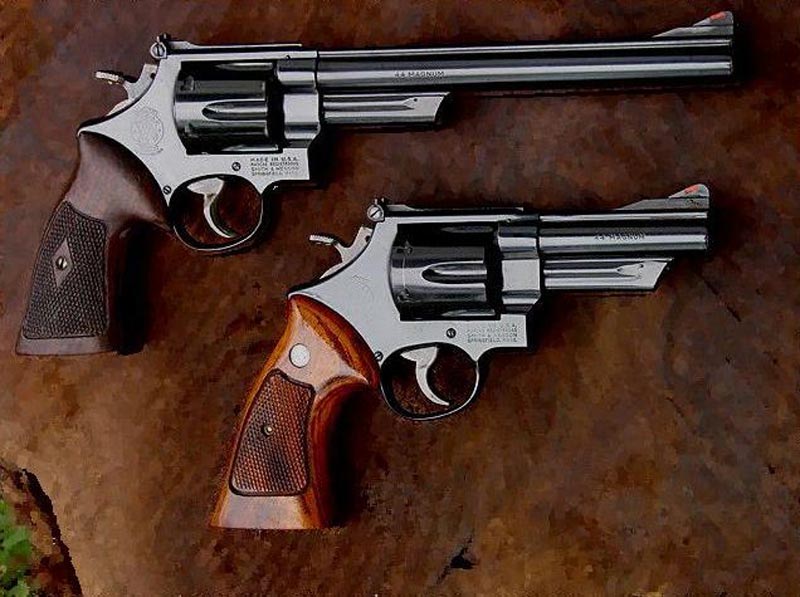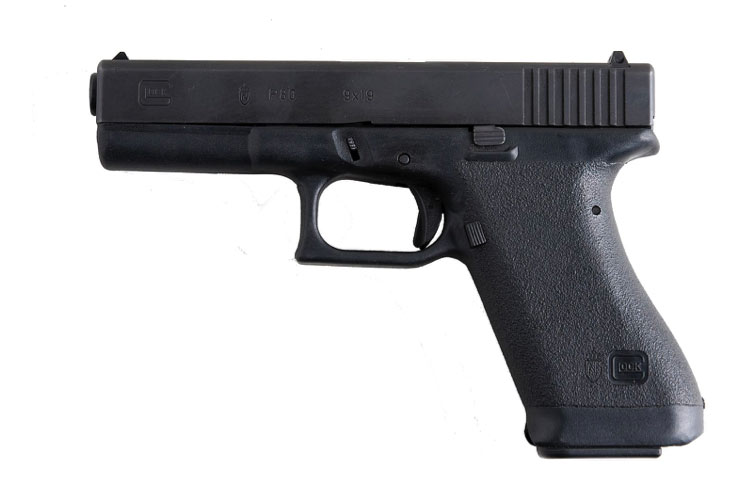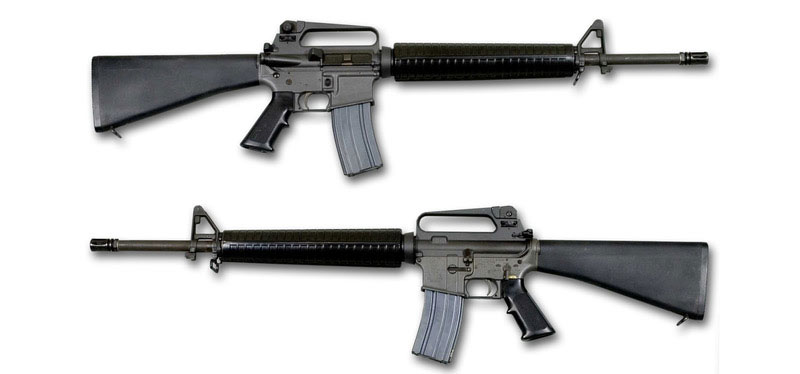
A farewell to firearms mistakes: How to get the details correct in scenes with guns
First of a two-part series. Also see Part two: Writing about guns? Get your ammunition right
See that handgun on your writing desk? There. Just to the right of your keyboard. Go on, pick it up. Heavy, isn’t it? Surprisingly so. Nearly three pounds. Mind you, it’s a Smith & Wesson Model 29 and it’s loaded, so that’s on the money.
Is it making you nervous? Let’s just put it down again and get on with this article. In fact, before we do that, let’s unload it. Press the cylinder release. Flip the cylinder out. Push the ejector rod to clear the rounds from the chambers.
Good, that’s safe. Because I want to talk guns and how to use them in your writing.
I write in a couple of genres: vigilante/military fiction and crime. Both call for a certain amount of gunplay, from protagonists and antagonists. But firearms pop up in all sorts of places (and genres), so if you’re going to introduce one into your novel, it’s vital you get it right.
Write regency romance? (And after the phenomenal success of Bridgerton, I suspect lots of people will be trying their hand.) The Napoleonic Wars were raging in Europe, duels were still commonplace, and what country house weekend would be complete without a bit of shooting? That’s a hell of a lot of guns.
How about YA fiction? Maybe your sk8er boi MC discovers a discarded pistol under a half-pipe. If, to set the plot running, the gun goes off accidentally, you’d better know how that could happen.
Like all fictional props, guns need careful handling. Luckily, there are plenty of places where you can get information. But let’s clear up a few of the basics right here.
Know your pistols from your revolvers?
To a lot of people, the terms pistol and revolver are interchangeable. They might also be called handguns, especially in the United States. In fact, they are two separate categories of weapon with distinctive characteristics that we, as writers, can use to our (and our characters’) advantage.
In the glory days of pulp fiction, pistols were often called “automatics.” In fact that’s a misnomer, since automatic weapons will fire continuously for as long as the trigger is held down (or they run out of ammunition).
Technically, pistols are semi-automatic, meaning each trigger-pull fires a bullet, removes the spent brass cartridge, loads a new round into the chamber and cocks the hammer for the next shot. But they won’t fire the new round until the shooter pulls the trigger again.
‘Put ’em up, Deke!’
A revolver gets its name from the revolving cylinder that houses the rounds (we’ll come back to that word in a minute). They come in two flavors: single-action and double-action. If you’re picturing a classic cowboy gun or six-shooter, you’re in roughly the right place.
Single-action means the trigger has one function: to fire the gun. To prepare it for firing, you have to manually pull back the hammer. Double-action means the trigger has two functions: it cocks the hammer and it fires the gun. Confusingly, you can still fire a double-action revolver like a single action by cocking the hammer manually; this will result in a lighter trigger pressure needed to fire it.
Revolvers generally hold fewer rounds than pistols. Six is the most usual capacity. Larger rounds mean fewer chambers in the cylinder. Five is common. Smaller calibers such as a .22 mean more rounds can fit in the cylinder, so you might have a ten-round .22 revolver. Sticking with six for now, it means your character is going to run out of ammunition faster than an opponent with a pistol. That can be good for increasing tension. Think of Dirty Harry:
“I know what you’re thinking. ‘Did he fire six shots or only five?’ Well, to tell you the truth, in all this excitement I kinda lost track myself.”
Of course, Harry Callaghan did no such thing. Nor should you. I have often spent a few reasonably enjoyable minutes reading back over a firefight and counting how many rounds each character fired and cross-checking with the capacity of their weapon.

When a revolver fires its last shot, the reloading process does not involve a magazine. The rounds are loaded directly into the chambers of the cylinder. Either by hand (think adrenaline-shaky digits fumbling rounds into a revolver while the bad guys close in) or using a little gizmo called a speedloader, a device that holds the rounds in a circle or semi-circle, ready to be plugged straight into the cylinder.
‘Words are loaded pistols’ – Jean-Paul Sartre
Welcome to the revolver’s more modern cousin: the pistol. Sartre was trying to make a point about the power of words. But as Dirty Harry might have said: “OK, you carry some words. Me, I’m taking a pistol.”
The word “pistol” most likely derives from the Czech word píšťala, a kind of hand-held cannon carried by soldiers in the Hussite Wars of the 1420s. And in a pleasing etymological ripple through time, large-caliber handguns today are often referred to as “hand-cannons.”
If the revolver conjures up images of the Wild West, the pistol draws the eye to more modern fields of conflict. One of the longest-lasting designs is the Colt 1911. This was standard issue for the US Army from 1911 to 1985, encompassing both World Wars, Korea and Vietnam.
In looks, they resemble a flipped capital L or maybe the top and right sides of a rectangle, with a trigger in the inner corner. Pistols have fewer protruding elements and a cleaner, slicker look than revolvers.
From a dramatic point of view, they offer characteristics that are mirror images of the revolver’s. For a start, the rounds are carried in a detachable container called a magazine.
Rookie error alert: NEVER refer to a magazine as a “clip.” A clip is a type of speedloader, a metal or, more rarely, plastic device that holds rounds ready to be loaded into a detachable magazine.
“Stripper clips” are specialized clips used in automatic and semi-automatic rifles. The user first fits the stripper clip into a slot or hinged or detachable bracket above the magazine. Then they push down with their thumb on the topmost round to strip the rounds out of the clip, pushing them down into the magazine against the spring.
Your character might carry spare rounds, spare magazines – “mags” – or, if they’re in a military context, clips. But at some point the current load is going to run out and then they have to stop firing until they reload. Pistols generally have greater capacity than revolvers, so your character can fire more bullets at their opponent before reloading or starting to throw cutlery.
Though they look modern, pistols were originally designed in the 1890s. Maybe your Victorian country house romance could have a bewigged milord pointing a pistol at a poacher after all.

The sound of silence
Silencers/suppressors are those tubes you see on the front of the barrel. Pistols and rifles either have factory-threaded barrels or can have one fitted ready to accept a suppressor. Revolvers and shotguns are generally unsuppressed.
And let’s deal with another terminological issue right away. Silencer or suppressor? Gun nuts – sorry, firearms enthusiasts – can cheerfully while away a few happy hours debating the difference, but for us word nuts – sorry, fiction writers – here’s the skinny.
The two terms can be used interchangeably. They both refer to a tubular device that reduces the noise a gun makes when you fire it.
One thing to note if your character is using one: They do not generally silence the report of a firearm but merely suppress it. If an unsilenced weapon goes BANG!!!, a silenced weapon goes bang.
A friend of mine in the British Army characterized it as the sound of a telephone book (or telephone directory) being slammed down hard on a table.
If the ammunition is subsonic, meaning the bullet doesn’t break the sound barrier as it leaves the barrel, then they’ll be quieter. Make them subsonic .22 rounds fired from a gun with a big suppressor, and the sound of the gun’s action can be louder than the report itself. But that’s an unusual combination.
In general, even with a silenced weapon, it means that you can’t have your character dispatching an enemy in a library without anybody noticing.
Rifles, shotguns and machine guns
OK, that covers handguns. What about rifles? (And in military parlance, handguns and rifles are often called longs and shorts.)
There are a couple of different ways to split up long guns. We could say rifles, machine guns and shotguns. Or single-shot versus repeating. Or manual, semi-automatic and automatic. The problem for us writers is, there’s a lot of overlap. Let’s try to unpack it so our character ends up holding the right sort of weapon for the job.
Picture three archetypal characters. A farmer. A deer hunter. A soldier. Now give each one a long gun. The farmer gets a shotgun: a twin-barreled weapon that “breaks” at the breech and that he can hold over his elbow. The hunter has a single-barreled weapon with a wooden stock and a telescopic sight. The soldier has a machine gun with a magazine or maybe a long belt of shiny brass cartridges draped over her shoulder.
Shotguns are smooth-bore weapons. That means the inside of the barrels is polished and free of any markings. Rifles and machine guns are rifled. This means if you look down the barrel, you see helical grooves called rifling. These impart spin to the bullet, which stabilizes it in flight and ensures greater accuracy.
If your main character is a sniper, give him or her a rifle, not a shotgun. If they’re an infantry soldier, an automatic rifle/machine gun would be best. That means it fires as long as the trigger is held down. In a rural context, rifles are common, but the limited capacity of a shotgun makes it an ideal choice if you want your character to run out of ammo quickly. In my work in progress, I switched my weapon from a pump-action shotgun to a break-action specifically to limit him to two shells before the gun needed reloading.
Let’s also clear up a little issue of terminology that raises temperatures on both sides of the gun-control debate (which looms far larger in the US than in places like the UK): “assault rifle” versus “assault weapon.”
An assault rifle is a type of machine gun. It has a fire selector switch that gives the user the option of continuous fire for one trigger-pull. The term is simply the English translation of the WWII German word Sturmgewehr (Storm rifle).
Fully automatic rifles (i.e., assault rifles) are banned for civilian use in the US. The “black rifle,” aka AR-15, looks like the automatic version used by the US military, which is currently the Colt M4, successor to the M16. But it is limited to semi-automatic fire only. That means you have to pull the trigger each time you want to fire it. The AR stands for Armalite Rifle – not Assault Rifle.

(Photo by Armémuseum (The Swedish Army Museum), CC BY-SA 4)
Assault weapon, though commonly used, has no technical meaning. It’s generally used by laypeople to describe AR-15-style rifles. After all, any weapon can be used to assault somebody or something. The key distinction is a rifle’s capacity for automatic firing. Military/law enforcement, yes. Civilian, no. Only use “assault rifle” if your character is carrying a military-spec firearm.
Can we talk about gun safety?
Guns have safety catches, right? Wrong! Some guns have safety catches. A lot of pistols, for example. Plus rifles and shotguns. Revolvers almost never have a safety catch. I know of a very successful author who made this rookie error in his first book. (A knowledgeable reader pulled him up on it and he’s never made the same mistake since.)
Revolvers don’t need safeties because either they’re single-action, in which case they can’t fire unless the hammer is pulled back to cock them. Or they’re double-action, with long and heavy trigger pulls to cock and fire them, which militates against accidental firing.
However, just because your character has a pistol, don’t automatically assume they’ll need to switch off the safety before firing. Pistols can be hammer-fired or striker-fired. Hammer-fired means there’s a visible hammer – a little metal component at the shooter’s end of the barrel that slams down against the percussion cap of the round in the chamber. Striker-fired means there’s an internal component that shoots forward when you pull the trigger to fire the bullet down the barrel.
Some striker-fired pistols such as Glocks do not have external safety catches that you have to manually switch off. Instead they have safety devices incorporated into the trigger and firing mechanism that release in sequence as the trigger is pulled. I made this mistake in my books twice.
Next: Part two—Writing about guns? Get your ammunition right







Amazing detail, thank you Andy & just to throw one into the mix, the SLR that the UK military used for many years was described in training as “semi-automatic” however we were shown how to change that status to fully automatic but with the damage to the barrel that would occur. P.s. AI is a brilliant and helpful site, thank you.
I believe that’s the one that they ended up changing party because too many people were getting shot accidentally by pass-throughs.
I’m glad you have learned some things since the first half-dozen Gabriel Wolfe books. I enjoy the characters and the plots and your description of place is quite good. But, when it came to guns, well, it was obvious that you had probably learned what you knew from books and hadn’t handled many firearms. Yes, you figured out that Glocks have a lot of safeties, but none you can snick on and off. But, did you learn that the S&W Shield is, like the Glock, striker fired? You mentioned a hammer on one at some points. I enjoy books like… Read more »
For what it’s worth, we don’t use “Colt” M4s. Practically every line issue service rifle (whether M4 series or M16A4) brought into US military inventory in the last 30 years are out of FN USA, a US-owned subsidiary of FN Herstal out of Belgium. Colt lost the contract for bulk runs a while back, and wasn’t even the original designer of the weapon. Also, automatic weapons aren’t banned for civilian use in the States. Post 1986, it’s unlawful to manufacture them without an SOT license, with the additional caveat being those can only be produced or sold to law enforcement… Read more »